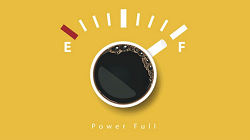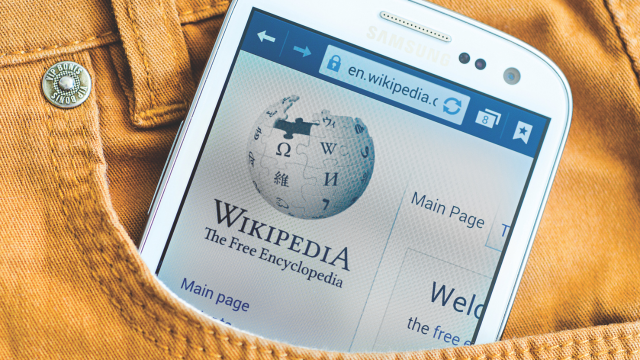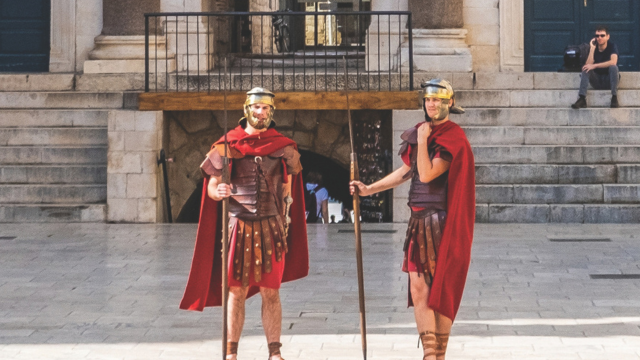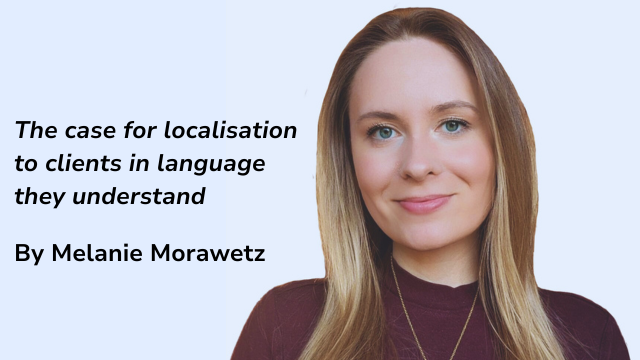-
QUALIFICATIONS
- For Linguists Worldwide
- For UK Public Services
- Preparation
- Policies & Regulation
-
MEMBERSHIP
- Join CIOL
- Professional Membership
- Affiliate Membership
- Chartered Linguist
- Already a member?
- Professional conduct
- Business & Corporate Partners
-
LANGUAGE ASSESSMENTS
- English
- All Other Languages
-
CPD & EVENTS
- Webinars & Events
- CIOL Conferences
- Networks
- CIOL Mentoring
-
NEWS & VOICES
- News & Voices
- CIOL eNews
- CIOL Awards
- The Linguist Magazine
- Jobs & Ads
-
RESOURCES
- For Translators & Interpreters
- For Universities & Students
- Standards & Norms
- CIOL & AI
- All Party Parliamentary Group
- In the UK
- UK Public Services
- Find-a-Linguist
Creating a buzz
By Vasiliki Prestidge
 Is a marathon session with a team of creatives and translators an effective way to localise an ad campaign, asks Vasiliki Prestidge.
Is a marathon session with a team of creatives and translators an effective way to localise an ad campaign, asks Vasiliki Prestidge.
One evening in February, when Europe was not yet the epicentre of a pandemic, one of my regular agencies called me and asked if I would be available for an on-site, live transcreation assignment. At first, I was rather confused. ‘Surely they mean simultaneous interpreting,’ I thought to myself. But after asking a few questions, I understood.
Let’s look at transcreation first. I am aware that the word can cause lively conversations among both supporters and sceptics. Many translators argue that transcreation is nothing but a trendy term for good translation, and a way of charging more by spicing up the service with a fancy description.
In my experience, transcreation is translation performed for the creative industries (marketing, advertising, design, illustration, the visual arts, film etc.). Specifically it refers to work intended to be used by these industries to sell, promote and appeal to the emotions of a targeted audience. In this context,
creative translation does not only imply creative texts and writing, but also the framework within which the
text is used.
It requires a set of additional skills, including copy editing, copywriting, understanding advertising techniques and writing methods. Transcreators deliver three versions of the source text along with back translations for each version and a detailed rationale, justifying their word choices, word order changes, and why moving away from the original is necessary. The first is close to the original, the second a little bit further away and the third quite far from the words of the original. In essence, it is rewriting taking inspiration from the original.
The main goal is to transfer the tone of voice (TOV), brand messages and emotions, rather than worrying about the words and their order. In addition, content for transcreation is very often accompanied by images, video, sounds, leaflets, style guides, brand guidelines and TOV instructions, all provided by the client.
10 linguists, 6 hours, 7 concepts
Typically, a transcreator will be given a copy, a brief and a timeframe within which they need to produce the transcreated copy from the comfort of their home office. In my case, the client was looking for a linguist to visit their premises from 4pm to 10pm and sit with their creative team. The ‘live’ aspect of the assignment meant I was given a few concepts, including the copy, imagery, video, brand messaging, style guide and hashtags, and my job was to come up with the transcreated copy instantly, on-site. It sounded challenging.
I asked for as much information upfront as possible, but the project was shrouded in secrecy. I knew the time, date, venue and the industry involved: coffee and beverages. I read as much as I could and researched the companies based in the building, looking at their clients to see which ones worked in the drinks industry, so that I could be as prepared as possible. Luckily, two days before the assignment I was given more specific details about the brand, which helped me prepare in a more targeted way.
On the day, I arrived to find a team of around 35 creatives and linguists working in the same venue: a converted loft in East London. The room was buzzing with energy. There were cameras, lights, desks, laptops, endless snacks and unlimited coffee supplies. At that point, I realised that they had hired 10 linguists working into 10 languages. They asked us to sit round a big table all together. It felt a bit like being back at university.
Over four hours, we were given seven concepts designed for the UK market and we had to come up with a concept for each one in our target language. The client’s creative team consisted of photographers, designers, illustrators, copywriters, copy editors and marketing communications specialists. The concepts were given to me one by one as a brief, and I had about 30 minutes to produce a concept for the Greek market. Each concept had its own dedicated creative team, which was standing by for questions.
Test driving content
One of the challenges in generating the Greek copy was that the concepts were quite similar yet different. For example, the phrasal verbs ‘level-up’ and ‘rise-up’ use ‘up’ as the common word to link two different advertising concepts. Aside from the fact that they are quite similar in meaning, Greek, like many other languages, does not have phrasal verbs. The key message being conveyed was the movement of rising, and this was achieved by using the verb ‘to rise’ in Greek (ανέβα) but in different tenses.
Another challenge was that English words at the core of a concept were problematic in translation. In English, many words can be both verbs and nouns. At the hands of creative writers, this is a fantastic tool. The word ‘brew’ can mean ‘to brew (coffee)’ but it can also refer to the coffee itself, as in ‘such a great brew’. Greek is not as flexible. We don’t have a great equivalent for the word ‘brew’ either, and in one of the concepts this word had a key role.
This meant coming up with an entirely new concept for the Greek market with the guidance of the client’s creative team. This was achieved by understanding the product, target market and desired outcome. I proposed certain phrases with back translations and details of the associations made by Greek people when hearing or reading these words. For the less problematic concepts I entered the Greek copy into spreadsheets along with back translations and my rationale.
After that, I worked with the creative teams to produce the content and test it. The Greek content needed to be transferred to different apps and platforms: InDesign for the leaflets and posters; a survey platform for the customer survey; and video editing software for the video. I then sat with each creative and read through the posters, took the survey and watched the videos to ensure everything was placed correctly.
This was a critical point in the process as many errors were introduced during production. For instance, a graphic designer without knowledge of Greek would not know if a word in bold had moved from second place in an English sentence to fourth place in the Greek translation, so the wrong words might be emphasised. Part of the meaning that is achieved through design would be lost if the wrong words ended up in bold.
Access to the client
At around midnight, just as I was leaving the venue, I realised that this was one of my most interesting recent projects. Transcreators, just like translators, tend to work on their own, but I found myself producing copy in a second language surrounded by other linguists and a creative team in an open-plan office. The working environment was a little stressful at first and took some getting used to, but then I started feeling the energy in the room. Soon everyone was bouncing ideas off each other. I had the client right there, which meant I could ask anything I wanted, whenever I wanted, and get an immediate response. This was particularly useful.
I expressed my concerns about the areas I felt didn’t work very well for the Greek market, suggesting solutions and back translations, and the client instantly chose their preferred option. Any professional transcreator or translator knows that usually you have to email back and forth, wait for answers, confirm and reconfirm. So this instant way of working was a breath of fresh air. As the evening progressed the process became more fun and energising.
There was certainly a buzz among the transcreators. Having all the transcreators from the various languages working around the same table was genius. We aired our queries and mentioned the solutions we were employing. And of course, what wasn’t working in Italian wasn’t working in Spanish. And what wasn’t working in Greek wasn’t working in Russian. And the solution for Italian could also be applied to Spanish, the solution for Greek to Russian etc. The result was a collaborative, creative effort of individuals from different backgrounds, industries, languages and cultures acting in synergy.
Perhaps this way of working wouldn’t suit a more introverted linguist. Some individuals perform better on their own, especially when having to produce copy in a second language. Others may prefer having all their dictionaries around them, or may need more time to familiarise themselves with the team or the product involved. I certainly felt that this was an efficient yet tiring method to produce, test and publish multilingual advertising materials in one evening.
The client paid for preparation time, travel time, travel expenses and double my full day fee, plus overtime, because they required my presence out of normal office hours. I had anticipated that this was going to be a beautiful but somewhat exhausting evening. Going forward, I would certainly work within such a fast-paced, creative environment again. I believe that for the advertising industry this could be the way forward.
Filter by category
More
The Chartered Institute of Linguists (CIOL), Incorporated by Royal Charter, Registered in England and Wales Number RC 000808 and the IoL Educational Trust (IoLET), trading as CIOL Qualifications, Company limited by Guarantee, Registered in England and Wales Number 04297497 and Registered Charity Number 1090263. CIOL is a not-for-profit organisation.








